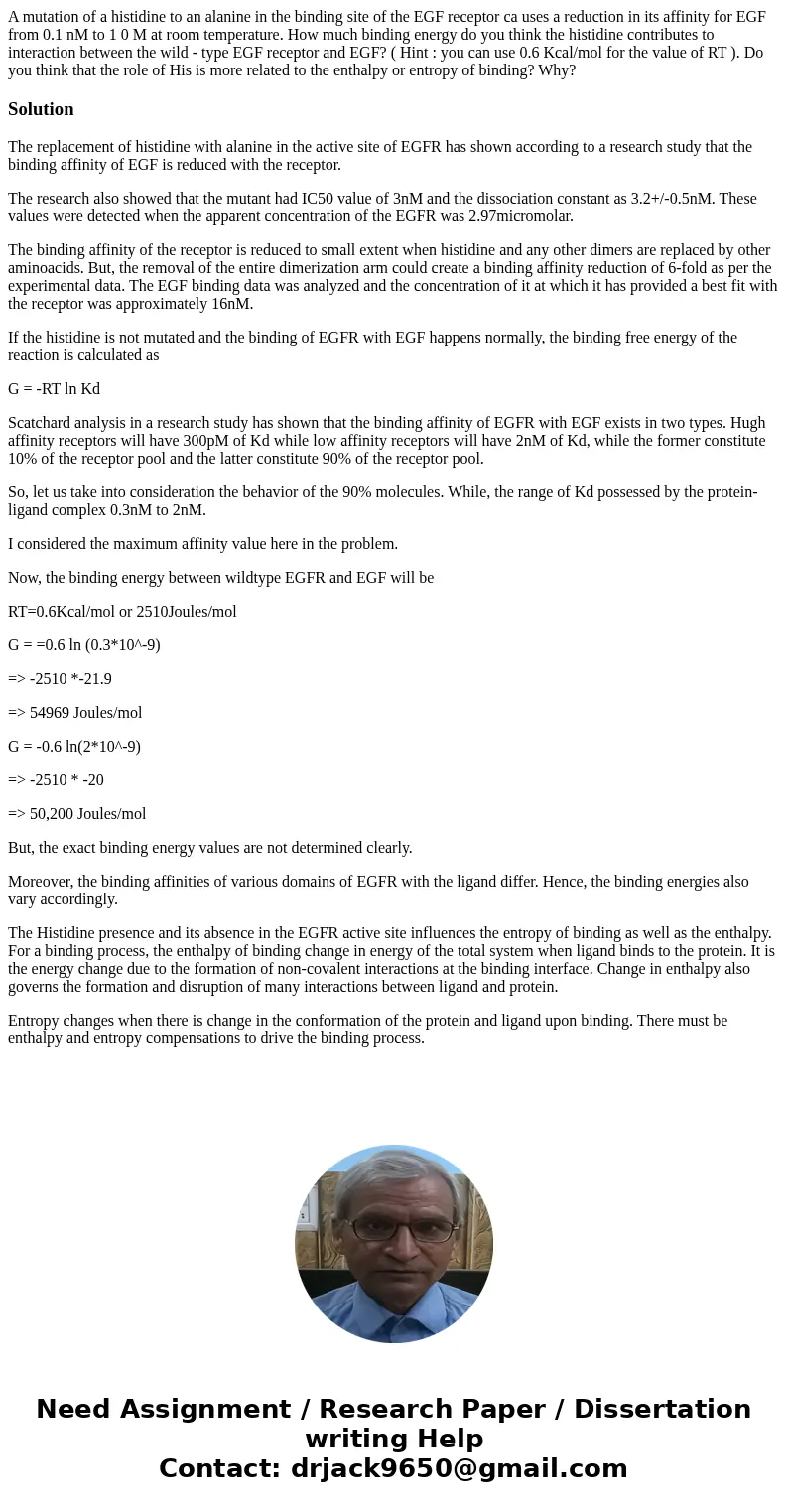A mutation of a histidine to an alanine in the binding site
A mutation of a histidine to an alanine in the binding site of the EGF receptor ca uses a reduction in its affinity for EGF from 0.1 nM to 1 0 M at room temperature. How much binding energy do you think the histidine contributes to interaction between the wild - type EGF receptor and EGF? ( Hint : you can use 0.6 Kcal/mol for the value of RT ). Do you think that the role of His is more related to the enthalpy or entropy of binding? Why?
Solution
The replacement of histidine with alanine in the active site of EGFR has shown according to a research study that the binding affinity of EGF is reduced with the receptor.
The research also showed that the mutant had IC50 value of 3nM and the dissociation constant as 3.2+/-0.5nM. These values were detected when the apparent concentration of the EGFR was 2.97micromolar.
The binding affinity of the receptor is reduced to small extent when histidine and any other dimers are replaced by other aminoacids. But, the removal of the entire dimerization arm could create a binding affinity reduction of 6-fold as per the experimental data. The EGF binding data was analyzed and the concentration of it at which it has provided a best fit with the receptor was approximately 16nM.
If the histidine is not mutated and the binding of EGFR with EGF happens normally, the binding free energy of the reaction is calculated as
G = -RT ln Kd
Scatchard analysis in a research study has shown that the binding affinity of EGFR with EGF exists in two types. Hugh affinity receptors will have 300pM of Kd while low affinity receptors will have 2nM of Kd, while the former constitute 10% of the receptor pool and the latter constitute 90% of the receptor pool.
So, let us take into consideration the behavior of the 90% molecules. While, the range of Kd possessed by the protein-ligand complex 0.3nM to 2nM.
I considered the maximum affinity value here in the problem.
Now, the binding energy between wildtype EGFR and EGF will be
RT=0.6Kcal/mol or 2510Joules/mol
G = =0.6 ln (0.3*10^-9)
=> -2510 *-21.9
=> 54969 Joules/mol
G = -0.6 ln(2*10^-9)
=> -2510 * -20
=> 50,200 Joules/mol
But, the exact binding energy values are not determined clearly.
Moreover, the binding affinities of various domains of EGFR with the ligand differ. Hence, the binding energies also vary accordingly.
The Histidine presence and its absence in the EGFR active site influences the entropy of binding as well as the enthalpy. For a binding process, the enthalpy of binding change in energy of the total system when ligand binds to the protein. It is the energy change due to the formation of non-covalent interactions at the binding interface. Change in enthalpy also governs the formation and disruption of many interactions between ligand and protein.
Entropy changes when there is change in the conformation of the protein and ligand upon binding. There must be enthalpy and entropy compensations to drive the binding process.

 Homework Sourse
Homework Sourse